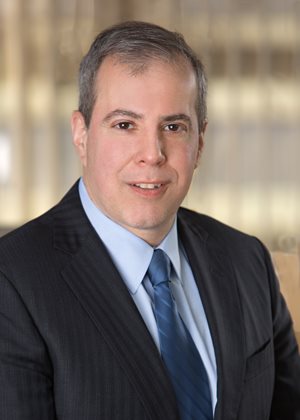According to published reports, since the beginning of the COVID-19 crisis, 406 public companies have withdrawn annual guidance and 61 companies have withdrawn quarterly guidance. The upcoming earnings call season will be filled with investor questions for public companies regarding how they are responding in the short term as well as their plans for long-term stability.
FEI Daily talks with Marc Siegel, a partner with Ernst & Young LLP’s Financial Accounting Advisory Services (FAAS) practice, about how senior-level financial executives should prepare for the hard questions.
FEI Daily: What do you think this portends for financial executives during the upcoming earnings season and investor calls?
 Marc Siegel: There’s so much uncertainty about the future that financial executives are approaching these quarterly calls with investors very carefully. A typical call usually addresses a review of historical results and how the business is positioned for the upcoming quarters and year. In this case, historical results for the quarter likely won’t provide nearly as much of a basis for investors to make projections for the future.
Marc Siegel: There’s so much uncertainty about the future that financial executives are approaching these quarterly calls with investors very carefully. A typical call usually addresses a review of historical results and how the business is positioned for the upcoming quarters and year. In this case, historical results for the quarter likely won’t provide nearly as much of a basis for investors to make projections for the future.
The statement by U.S. Securities and Exchange Commission Chairman Jay Clayton and Director of the Division of Corporation Finance Bill Hinman suggests that companies can, and should, take advantage of the legal safe harbors to say what they can about the future.
For companies with businesses that have been deemed “nonessential,” financial guidance is quite difficult. We’ve been suggesting that companies talk about the “now,” the “next” and the “beyond,” whether they include specific earnings guidance or not.
Importantly, since financial information doesn’t tell the entire story about a company’s long-term value, we encourage companies to also discuss how they may be fortifying their sustainability. This can be done by structuring the call in terms of how they are enhancing human value, customer value and societal value during this crisis and in the “next” and “beyond” phases.
FEI Daily: In what ways should public companies be communicating with investors before and after earnings calls if issues quickly develop?
Siegel: There is no shortage of communication channels available to stakeholders. We have seen companies employ blogs, frequently asked questions and articles with anecdotes on their websites in addition to social media posts.
Again, we encourage companies to consider all stakeholders in their communications as employees, customers, suppliers and the company’s greater societal ecosystem will all potentially be analyzing these communications.
A key challenge for companies is to build in a cross-functional governance structure around these communications so that the finance team is aware of them. This way they can weigh in to make sure that the story being told by these other communications is, at a minimum, not inconsistent with the messages coming from investor relations, the regulatory filings and, most importantly, are on point with the C-suite’s overall corporate purpose and long-term strategy.
FEI Daily: Is there any historical analogy to this type of disruption of earnings forecasts and communications?
Siegel: While there have been shocks to the markets in the past, it’s unclear to me that there are system-wide analogies that created this much uncertainty about how to structure earnings calls and investor communications.
The lack of visibility into the duration of this crisis seems quite different from the financial crisis in 2008–09. The magnitude of the impact, due to corporate and government actions to safeguard citizens and employees across industries and geographies, make this quarter, to me, unique since the advent of quarterly calls with investors.
FEI Daily: What do you consider the three most important strategies for financial executives to consider when communicating to investors during a crisis?
Siegel: First, recognize that this conference call will potentially be analyzed by all stakeholders.
While sell-side analysts typically are the ones who voice questions on the call, the topics they raise may or may not represent the concerns of the buy-side community more broadly — or creditors, or asset owners who are directing their assets to asset managers. The asset owners, as well as the largest index investors, are much more interested in the long-term sustainability of the company than the short-term historical results.
Second, we encourage companies to structure the call to talk explicitly about the prospects for all stakeholders (employees, customers, suppliers and the broader communities in which they operate), broken out also by categories like reactions in the “now,” the “next” and the “beyond” phases to the extent they are able.
Third, we suggest that management teams be open about what they don’t know and commit instead to regular updates as more information becomes available.
FEI Daily: You also sit on the Sustainability Accounting Standards Board (SASB). What issues does the COVID-19 crisis bring up in relation to sustainability reporting?
Siegel: Without speaking for the SASB organization, it’s clear to me that financial numbers and metrics alone will not tell the story about a company’s ability to sustain and grow over the long term.
There was a trend before the crisis of investors craving more information about long-term sustainability. This crisis will likely catalyze rather than slow the move toward sustainability reporting.
The sustainability factors recommended by SASB, which are designed for investors on an industry-by-industry basis, help both companies and investors communicate about how the organization is progressing toward their overall goals and purpose. Finance departments at leading organizations are leaning in to provide their unique skill sets in data collection, data controls and reporting to help take their company’s sustainability reporting to the next level.
The views expressed by the author are not necessarily those of Ernst & Young LLP or other members of the global EY organization.